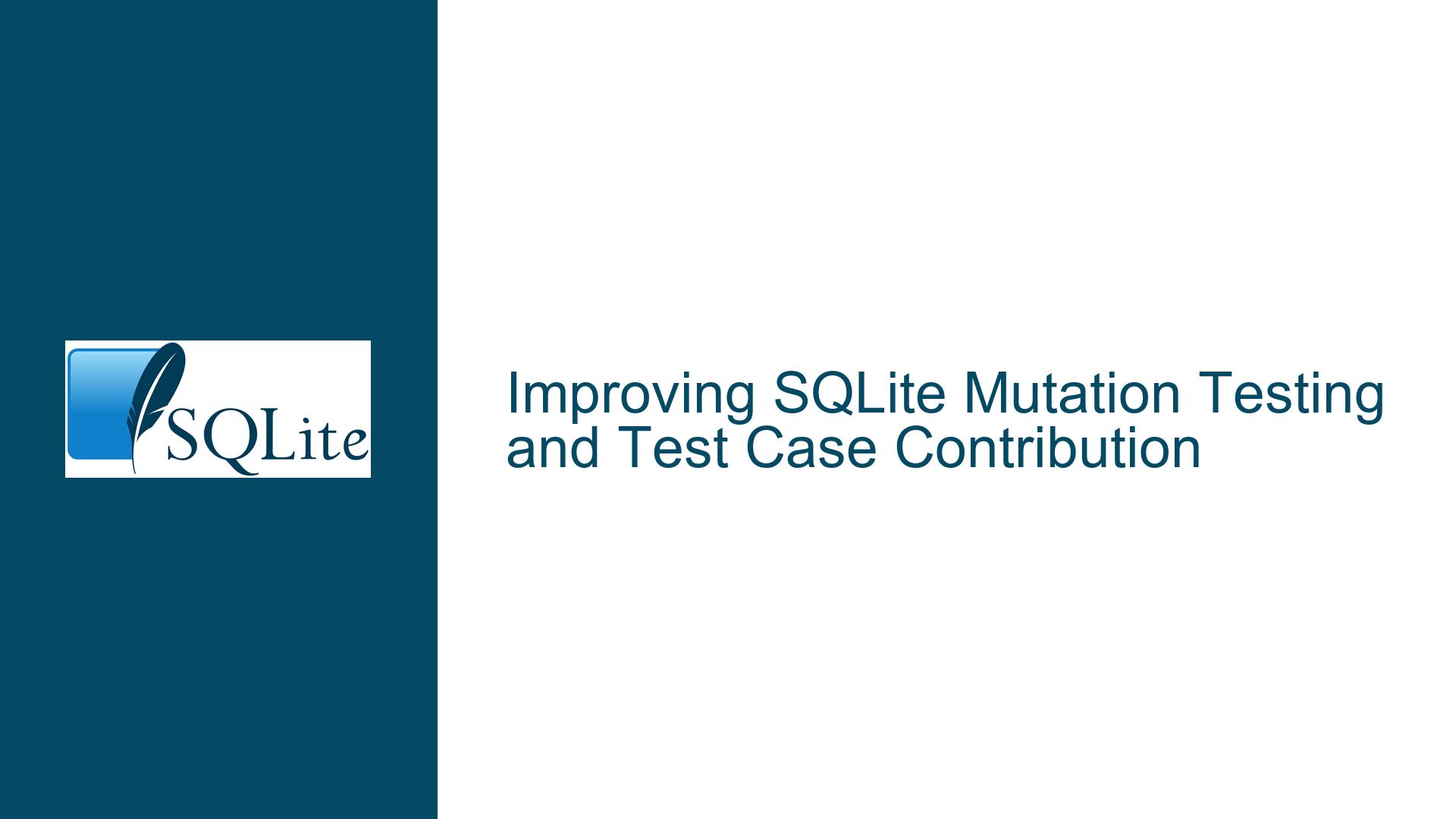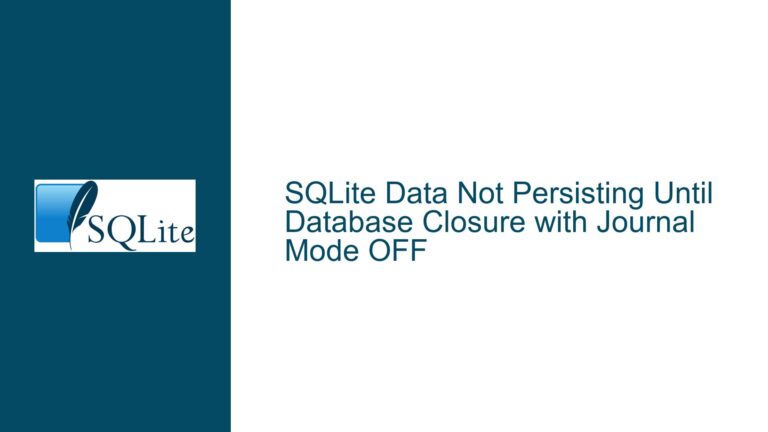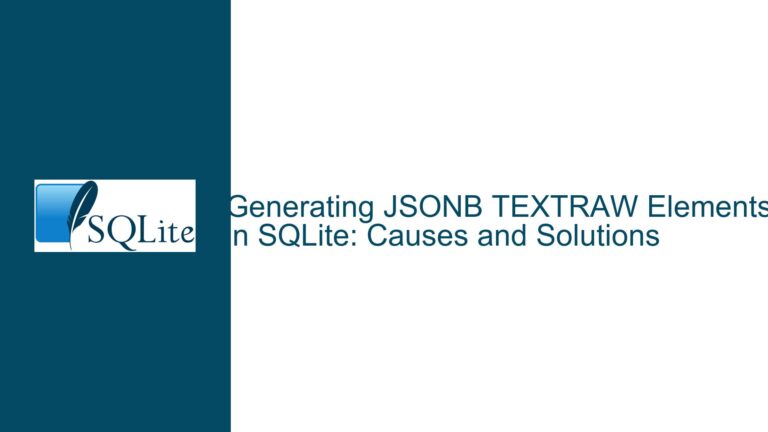Improving SQLite Mutation Testing and Test Case Contribution
Mutation Testing in SQLite: Challenges and Opportunities
Mutation testing is a powerful technique for evaluating the effectiveness of a test suite by introducing small changes (mutations) to the source code and checking whether the test suite can detect these changes. In the context of SQLite, mutation testing can help identify weaknesses in the test suite, particularly in areas where optimizations or edge cases are not adequately covered. However, as highlighted in the discussion, mutation testing in SQLite presents unique challenges, particularly when dealing with optimizations that do not affect correctness but may impact performance. This post delves into the core issues surrounding mutation testing in SQLite, explores the possible causes of these challenges, and provides detailed troubleshooting steps and solutions to refine the process.
The Challenge of Detecting Performance-Only Mutations
One of the primary challenges in mutation testing for SQLite is the difficulty of detecting mutations that only affect performance without altering the correctness of the results. For example, consider a mutation that disables a small optimization in a hash function. While the hash function may still produce the correct result, the performance degradation might be negligible or only detectable under extreme conditions, such as when millions of entries are loaded into a hash table. This makes it challenging to devise test cases that reliably detect such mutations.
The root cause of this issue lies in the nature of SQLite’s design, which prioritizes both correctness and performance. Many optimizations in SQLite are designed to improve performance without changing the observable behavior of the database. As a result, mutations that disable these optimizations may not produce incorrect results, making them difficult to detect through traditional testing methods. Additionally, the TCL test suite, while comprehensive, does not provide 100% Modified Condition/Decision Coverage (MC/DC), further complicating the detection of performance-only mutations.
To address this challenge, it is essential to develop test cases that specifically target performance-related behaviors. This might involve creating test scenarios that stress the database under heavy loads or using specialized tools to measure performance metrics. However, such approaches require careful consideration to avoid introducing unnecessary complexity into the test suite.
Balancing Test Suite Growth and Effectiveness
Another significant challenge in mutation testing for SQLite is balancing the growth of the test suite with its effectiveness. As demonstrated in the discussion, adding test cases for every possible mutation can quickly lead to an explosion in the size of the test suite. This not only increases the overhead of maintaining the test suite but also risks introducing redundancy, where multiple test cases target the same or similar mutations.
The underlying cause of this issue is the granularity of mutations and the corresponding test cases. In SQLite, many mutations affect low-level implementation details, such as hash functions or internal flags. While these details are critical for performance and correctness, they are often not directly exposed to the end user. As a result, creating test cases for these mutations requires exposing internal mechanisms through interfaces like sqlite3_test_control(), which can lead to bloated and overly complex test suites.
To mitigate this issue, it is crucial to prioritize mutations based on their impact and likelihood of occurrence. High-impact mutations that affect correctness or significantly degrade performance should be prioritized over low-impact mutations that only marginally affect performance. Additionally, automated techniques, such as test case reduction and prioritization, can help streamline the test suite by identifying and retaining only the most effective test cases.
Refining Mutation Testing Workflows and Test Case Contribution
The final challenge revolves around refining the mutation testing workflow and effectively contributing test cases to the SQLite test suite. As outlined in the discussion, the workflow involves applying mutations to the source code, identifying surviving mutants, using SQL fuzzing tools to kill these mutants, and simplifying the resulting SQL statements for inclusion in the regression test suite. While this workflow is effective, it requires careful execution to ensure that the contributed test cases are both useful and informative.
The primary cause of this challenge is the complexity of the mutation testing process, which involves multiple steps and tools. Each step introduces potential sources of error, such as incomplete mutation coverage, ineffective fuzzing, or overly complex test cases. Additionally, the process of contributing test cases to the SQLite test suite requires adherence to specific guidelines and standards, which can be daunting for new contributors.
To address this challenge, it is essential to establish clear guidelines and best practices for mutation testing and test case contribution. This includes documenting the mutation testing workflow, providing examples of effective test cases, and offering feedback mechanisms for contributors. Additionally, tools and scripts can be developed to automate parts of the workflow, such as mutation application, fuzzing, and test case simplification, reducing the burden on contributors and improving the overall quality of the test suite.
Detailed Troubleshooting Steps, Solutions, and Fixes
1. Developing Performance-Sensitive Test Cases
To detect performance-only mutations, it is necessary to create test cases that specifically target performance-related behaviors. This can be achieved by designing test scenarios that stress the database under heavy loads or measure specific performance metrics. For example, test cases can be designed to evaluate the performance of hash functions by loading a large number of entries into a hash table and measuring the time taken for various operations. Additionally, specialized tools, such as performance profilers, can be used to identify performance bottlenecks and verify the effectiveness of optimizations.
2. Prioritizing High-Impact Mutations
To balance test suite growth and effectiveness, it is crucial to prioritize mutations based on their impact and likelihood of occurrence. High-impact mutations that affect correctness or significantly degrade performance should be prioritized over low-impact mutations that only marginally affect performance. This can be achieved by analyzing the source code to identify critical sections and focusing mutation testing efforts on these areas. Additionally, automated techniques, such as test case reduction and prioritization, can help streamline the test suite by identifying and retaining only the most effective test cases.
3. Streamlining the Mutation Testing Workflow
To refine the mutation testing workflow and improve test case contribution, it is essential to establish clear guidelines and best practices. This includes documenting the mutation testing workflow, providing examples of effective test cases, and offering feedback mechanisms for contributors. Additionally, tools and scripts can be developed to automate parts of the workflow, such as mutation application, fuzzing, and test case simplification. These tools can help reduce the burden on contributors and improve the overall quality of the test suite. Furthermore, collaboration with the SQLite development team can provide valuable insights and feedback, ensuring that contributed test cases meet the necessary standards and are effectively integrated into the test suite.
By addressing these challenges and implementing the suggested solutions, it is possible to enhance the effectiveness of mutation testing in SQLite and contribute valuable test cases to the test suite. This, in turn, will improve the overall quality and reliability of SQLite, benefiting both developers and end users.






